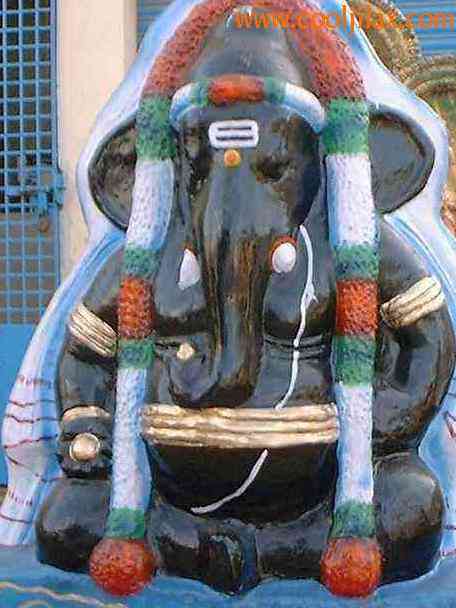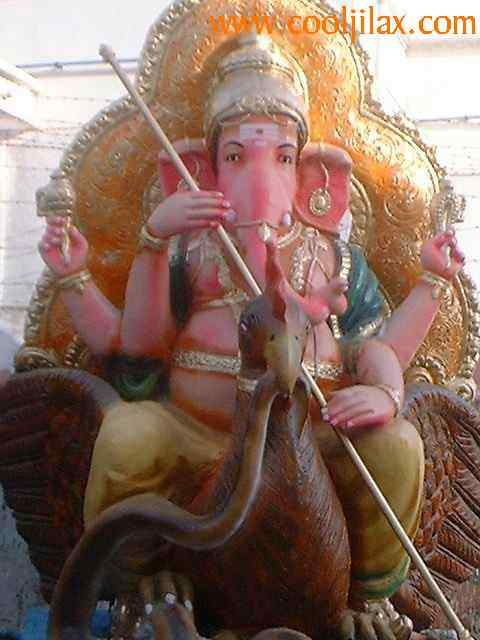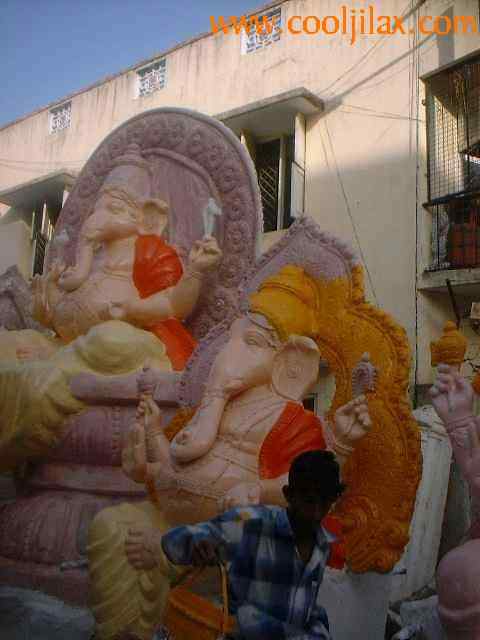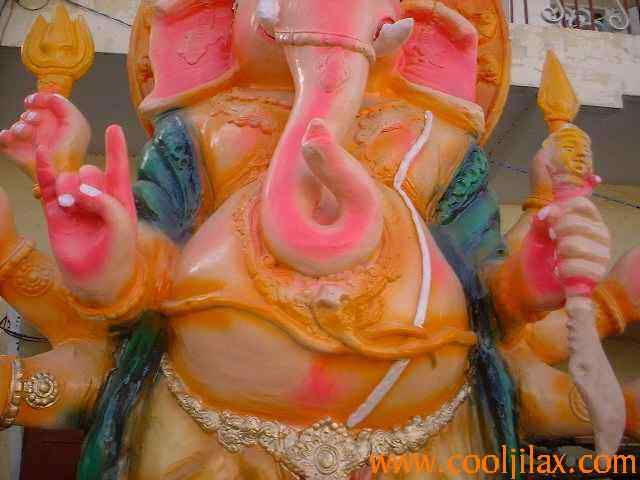 “Hearing the king say, ‘No one is as fortunate as I am.’, Vishvamitra became very happy and praised the king. The happiness felt from that meeting is known only to the minds of the king and the muni.” (Janaki Mangala, Chand 2.1)
“Hearing the king say, ‘No one is as fortunate as I am.’, Vishvamitra became very happy and praised the king. The happiness felt from that meeting is known only to the minds of the king and the muni.” (Janaki Mangala, Chand 2.1)
kāhūm̐ na kīnheu sukṛta suni muni mudita nṛpahi bakhānahīṃ |
mahipāla muni keā milana sukha mahipāla muni mana jānahīṃ ||
mahipāla muni keā milana sukha mahipāla muni mana jānahīṃ ||
Based on the path you follow in life, you consider yourself to be righteously situated. Not that you’re the best or that you’re above everyone else, but you are familiar with the meaning of life and how to go about fulfilling it. Whether others like you or not is of no concern, for you are firmly convinced of the need for following the righteous path, which for you means observing sacrifice and austerity. On one occasion you happen to visit someone else who you respect very much. Though they are in a different occupation, you understand that they are well situated in the mind, that they have earned the respect that others offer to them. You have a certain request going into this meeting, so you’re not sure how you will be greeted.
To your amazement, the person you respect so much honors you immediately upon your arrival. He first pays you the highest honor outwardly with his behavior, and then his words of praise supersede the previous gesture’s kindness. He says that by your visiting him he has become the most fortunate person in the world, that the amount of his spiritual merits cannot be measured. Obviously this will warm your heart, for who doesn’t appreciate sincere praise? Especially when it comes from someone you respect so much, there is no measuring the delight you feel from kind words. Correspondingly, the person you are visiting feels the same happiness, for they do not make up false words of flattery to push a specific objective. They are famous for their honesty, so their praise heaped upon you not only brings happiness to your mind, but it validates the decision you have made in life to sacrifice your efforts towards the highest cause.
 Take this hypothetical situation and apply it to a real life meeting held many thousands of years ago and you can begin to imagine the happiness felt by the two parties. One side was Vishvamitra Muni, the famous son of Gadhi. He had a checkered past, which included life as a king and quarrels with another saint named Vashishtha. Ironically enough, the person Vishvamitra visited on this occasion had Vashishtha as a priest. King Dasharatha of Ayodhya was famous for having maintained the good standing of the Ikshvaku family, who were a dynasty of kings dating back to the beginning of creation. Dasharatha knew of Vishvamitra’s glory, of how he had undergone severe penances to take on the role of an ascetic. Dasharatha cared not for the ascetic’s past life as a king nor for his quarrels with Vashishtha.
Take this hypothetical situation and apply it to a real life meeting held many thousands of years ago and you can begin to imagine the happiness felt by the two parties. One side was Vishvamitra Muni, the famous son of Gadhi. He had a checkered past, which included life as a king and quarrels with another saint named Vashishtha. Ironically enough, the person Vishvamitra visited on this occasion had Vashishtha as a priest. King Dasharatha of Ayodhya was famous for having maintained the good standing of the Ikshvaku family, who were a dynasty of kings dating back to the beginning of creation. Dasharatha knew of Vishvamitra’s glory, of how he had undergone severe penances to take on the role of an ascetic. Dasharatha cared not for the ascetic’s past life as a king nor for his quarrels with Vashishtha.
When visited by Vishvamitra, Dasharatha knew how to act. In Vedic culture there are divisions of work and spiritual institutions in society. The work is determined by the qualities of the individual. Just as in a business some people are better leaders than others, in society some men are better suited to provide protection, which involves fending off enemies. The strongest and most capable fighters will survive in conflict, so those who can protect the best make ideal leaders of government.
The potential issue of having a “meathead” running the government is alleviated by the presence of the brahmanas, or priestly class. The powerful kshatriya
This technique of incorporation shouldn’t be that difficult to imagine. Think of a professional athlete. In whichever sport they participate, there is a particular training regimen, where they condition the body to perform at optimal levels on the day of competition. The game itself may only involve dexterity with respect to the rules and objects used, but the training is separate from this. If I am a tennis player, what do sit-ups have to do with performing well on the court? Sit-ups are on exercise to increase strength in the abdominal region of the body. Therefore the exercise is separate from the act of playing tennis against an opponent. If the sit-ups are targeted towards increasing the strength of the abdominal region to perhaps help with serving and lunging for tennis balls, the act becomes part of the routine of the successful professional tennis player. With the higher aim in mind, the scope of activity becomes all-inclusive, for even sleep helps to optimize performance.
The Vedic system of varnashrama-dharma is the most inclusive because the dharma identified is the highest. Dharma is the essential characteristic of something, and when it applies to a system of regulation, it is the set of procedures aimed at bringing that essential characteristic to the forefront and maintaining it. The identification with the spirit soul is the most inclusive, for it brings fraternal affection for all species, not just human beings. The individual spirit soul also exists well beyond the existence of the current bodily form.
The soul’s inherent characteristic is to serve the Supreme Soul, or God. Just realizing the presence of the soul and its qualities is difficult enough, therefore dharma is instituted society-wide. Each person follows activities that correspond to their body type so that gradually they can stop identifying with their form and start identifying with the soul. Under the proper procedures, every activity followed in life aims towards realizing the presence of the soul and allowing its dharma, its propensity to serve, to be directed in the proper area.
 Vishvamitra and Dasharatha were in different occupations, but they were still both following the highest dharma, which is known as bhagavata. While under varnashrama-dharma one person may be situated as a ruler and another as a priest, under bhagavata-dharma one is directly engaged in devotion to the Supreme Lord. Therefore it doesn’t matter what type of engagement they are taking up. As a mere formality one devotee follows administration as a way of life while another serves as a priest, but the connection to the divine consciousness is there in both cases, creating a situation of equality. If both parties understand their identities as spirit souls, part and parcel of God, there is no question of a difference.
Vishvamitra and Dasharatha were in different occupations, but they were still both following the highest dharma, which is known as bhagavata. While under varnashrama-dharma one person may be situated as a ruler and another as a priest, under bhagavata-dharma one is directly engaged in devotion to the Supreme Lord. Therefore it doesn’t matter what type of engagement they are taking up. As a mere formality one devotee follows administration as a way of life while another serves as a priest, but the connection to the divine consciousness is there in both cases, creating a situation of equality. If both parties understand their identities as spirit souls, part and parcel of God, there is no question of a difference.
When two people following bhagavata-dharma meet, their joy swells. This was the case with Vishvamitra and Dasharatha. The king welcomed the sage and openly declared that because of the sage’s visit, he had become the most fortunate person in the world. “No one is more fortunate than I am.” What a nice thing to say, no? Wouldn’t it make you feel good if you heard that, especially if it came from someone who had a strict vow to tell the truth?
It’s not surprising therefore that Vishvamitra praised the king right back when hearing this. To the outsider, or even to the person who was there that day, the happiness in both parties could be noticed. Nevertheless, only the minds of the two individuals could understand just how great that joy was. Rare it is to find someone who fully appreciates your work and understands why you do what you do. Better still when the person you meet is himself a pious character who has dedicated their life to serving God.
“What significance does this meeting have? You had two people who were really happy upon meeting each other, but what’s the big deal? Doesn’t this happen all the time?” The meeting is noted in the Janaki Mangala written by Goswami Tulsidas
 God should always be worshiped, remembered, and served, but that service is suppressed when we don’t know much about Him. Instinctively we understand that there is a higher power who created everything, who can predict the outcome to every single event and who can grant us whatever we want. At the same time, knowing that God is great doesn’t do much for us in terms of altering behavior. If great people are around, shouldn’t we want to associate with them? Otherwise, what is the use of their greatness? Perhaps their influence can extend to us in a positive manner, allowing us to find some sort of temporary happiness, but real greatness extends through both the personal and impersonal.
God should always be worshiped, remembered, and served, but that service is suppressed when we don’t know much about Him. Instinctively we understand that there is a higher power who created everything, who can predict the outcome to every single event and who can grant us whatever we want. At the same time, knowing that God is great doesn’t do much for us in terms of altering behavior. If great people are around, shouldn’t we want to associate with them? Otherwise, what is the use of their greatness? Perhaps their influence can extend to us in a positive manner, allowing us to find some sort of temporary happiness, but real greatness extends through both the personal and impersonal.
God’s impersonal influence is felt through the amazing material nature, which has things like the sun, the earth and the weather that can’t be predicted. We can utilize these resources for our sustenance, but even the animals have the same opportunity. The Vedas reveal some of God’s features, especially His bliss-evoking attributes. In His original feature, God is Bhagavan, who is so attractive that He is addressed as Krishna. Lord Krishna
As wonderful as Rama is, His wife Sita might be even more glorious. She is also beautiful, with her visible features able to enchant Rama. Those who love Rama will love anyone who makes Him happy. Since no one makes Rama happier than Sita, the devotees automatically have the highest affection for her, taking an interest in her devotional activities as well.
The stories relating to the Supreme Lord and His associates are so attractive that the saintly class never tires of hearing them. In their spare time they will even compose songs about the events so that they can be remembered even more. Take a notable and preferred incident from your life. If you want to remember it, you can probably write down accounts of the incident into a book, but how many times are you going to read this? If you synthesize the key elements into a song, however, you can remember the event every single day. Others can memorize the song and honor the event in that way too.
 The Supreme Lord’s activities are the most attractive. Therefore the saints regularly dip in the holy lake that represents His acts. The Janaki Mangala is another one of those lakes, with the saint Tulsidas focusing on a specific pastime: Rama’s marriage to Sita in the city of Janakpur. The meeting of Vishvamitra and Dasharatha was related to the marriage because without Rama leaving Ayodhya to protect Vishvamitra in the forest, He never would have come to Janakpur to attempt to lift the bow of Lord Shiva
The Supreme Lord’s activities are the most attractive. Therefore the saints regularly dip in the holy lake that represents His acts. The Janaki Mangala is another one of those lakes, with the saint Tulsidas focusing on a specific pastime: Rama’s marriage to Sita in the city of Janakpur. The meeting of Vishvamitra and Dasharatha was related to the marriage because without Rama leaving Ayodhya to protect Vishvamitra in the forest, He never would have come to Janakpur to attempt to lift the bow of Lord Shiva
Everything relating to that event is worth remembering, including the fateful meeting between the sage and the king in Ayodhya. Just contemplate upon their happiness, how their minds were filled with joy. Associating with positive people who derive happiness from spiritual life is supremely beneficial. Their examples validate for us the proper path in life, that of always chanting
In Closing:
Happiness did sage Vishvamitra find,
Upon meeting king who also joyful in mind.
The association of the saint for him so treasured,
That the resulting spiritual merits could not be measured.
Treading the righteous path can be rough,
To stay determined in opposition tough.
Thus so joyful to meet someone who appreciates,
Your work, dedication to piety they validate.
Dasharatha and Vishvamitra’s mutual feelings,
Measure of joy unknown from only seeing.
Two saintly figures in motion set the wheels,
For Rama joining Sita, of beauty surreal.
 “Activity in Krishna consciousness, or acting for the benefit of Krishna without expectation of sense gratification, is the highest transcendental quality of work. Even a small beginning of such activity finds no impediment, nor can that small beginning be lost at any stage.” (Shrila Prabhupada, Bhagavad-gita, 2.40 Purport)
“Activity in Krishna consciousness, or acting for the benefit of Krishna without expectation of sense gratification, is the highest transcendental quality of work. Even a small beginning of such activity finds no impediment, nor can that small beginning be lost at any stage.” (Shrila Prabhupada, Bhagavad-gita, 2.40 Purport) “Does a spiritualist think that they are risking something by dedicating more time to spiritual life? Why is there a distinction between spiritual and material anyway? Doesn’t this whole world belong to God? Am I not connecting with the Lord just by living, working to maintain my family? Isn’t service to man sufficient for serving God?” The separation between material and spiritual life exists in the minds of those who don’t understand how to dovetail every single behavior with service to the Supreme Personality of Godhead. That highest discipline is bhakti-yoga, which aims to keep a link to the divine consciousness in a mood of love through every single activity of the day. Whether to the outsider the behavior appears spiritual or material is of no concern, for the consciousness is focused on the glorious attributes of the Supreme Person. That contemplation then results in work being performed to maintain the concentration, completing the circle. Though the activities may vary, the link to the divine consciousness does not break.
“Does a spiritualist think that they are risking something by dedicating more time to spiritual life? Why is there a distinction between spiritual and material anyway? Doesn’t this whole world belong to God? Am I not connecting with the Lord just by living, working to maintain my family? Isn’t service to man sufficient for serving God?” The separation between material and spiritual life exists in the minds of those who don’t understand how to dovetail every single behavior with service to the Supreme Personality of Godhead. That highest discipline is bhakti-yoga, which aims to keep a link to the divine consciousness in a mood of love through every single activity of the day. Whether to the outsider the behavior appears spiritual or material is of no concern, for the consciousness is focused on the glorious attributes of the Supreme Person. That contemplation then results in work being performed to maintain the concentration, completing the circle. Though the activities may vary, the link to the divine consciousness does not break. Despite these cogent truths passed on by the acharyas of the Vedic tradition, the tendency is to think that if I devote too much time to spiritual life, I’ll eventually renounce everything and leave my important obligations neglected. The flaw that immediately jumps to mind is that the worthiness of the obligations supposedly missed is not taken account of. The sports gambler has the obligation of having an internet connection, a cell phone, and a television programming package that carries all the games that he needs to see. The fact that
Despite these cogent truths passed on by the acharyas of the Vedic tradition, the tendency is to think that if I devote too much time to spiritual life, I’ll eventually renounce everything and leave my important obligations neglected. The flaw that immediately jumps to mind is that the worthiness of the obligations supposedly missed is not taken account of. The sports gambler has the obligation of having an internet connection, a cell phone, and a television programming package that carries all the games that he needs to see. The fact that  The gambler is in the mode of passion because through the difficult work of making the wager and nervously waiting to see the outcome, even success does not provide enough mental satisfaction to stop the gambler from repeating the same activity. Similarly, the business mogul who has made billions of dollars doesn’t stop where they are, for their activity has not proved to be satisfactory at making them happy.
The gambler is in the mode of passion because through the difficult work of making the wager and nervously waiting to see the outcome, even success does not provide enough mental satisfaction to stop the gambler from repeating the same activity. Similarly, the business mogul who has made billions of dollars doesn’t stop where they are, for their activity has not proved to be satisfactory at making them happy. In bhakti, there is at least the seed of devotion to God remaining inside of you, just waiting to be watered again through the association of saints and the submissive hearing of Krishna-katha, or talks about the Supreme Lord in His personal form. With guaranteed progress, there is no reason not to at least give a little time to spiritual life. The saints know that in the current age of Kali conditions in society are not conducive to following spiritual life with any determination. Houses where the names of the Supreme Lord are chanted regularly in earnest are difficult to find, and it seems that even the prominent spiritualists have ulterior motives. Not to fear, though, for the holy name is all we need to connect with God in a mood of love. The recommendation of chanting the holy names in the maha-mantra daily for at least sixteen rounds on a set of japa beads proves to be our best friend, the most effective weapon in our attack against the thick fog of nescience. Just chant the holy names on a regular basis, even if you think it’s an activity that will cause you to lose out on other obligations, and see what effect it has. Changing from one job to another can leave you without any, but making Krishna the beneficiary of your activities instead of material nature will always make you a winner in the mind, for the Supreme Lord will comfortably rest within your thoughts holding His flute and dazzling your consciousness with His sweet vision.
In bhakti, there is at least the seed of devotion to God remaining inside of you, just waiting to be watered again through the association of saints and the submissive hearing of Krishna-katha, or talks about the Supreme Lord in His personal form. With guaranteed progress, there is no reason not to at least give a little time to spiritual life. The saints know that in the current age of Kali conditions in society are not conducive to following spiritual life with any determination. Houses where the names of the Supreme Lord are chanted regularly in earnest are difficult to find, and it seems that even the prominent spiritualists have ulterior motives. Not to fear, though, for the holy name is all we need to connect with God in a mood of love. The recommendation of chanting the holy names in the maha-mantra daily for at least sixteen rounds on a set of japa beads proves to be our best friend, the most effective weapon in our attack against the thick fog of nescience. Just chant the holy names on a regular basis, even if you think it’s an activity that will cause you to lose out on other obligations, and see what effect it has. Changing from one job to another can leave you without any, but making Krishna the beneficiary of your activities instead of material nature will always make you a winner in the mind, for the Supreme Lord will comfortably rest within your thoughts holding His flute and dazzling your consciousness with His sweet vision.


































